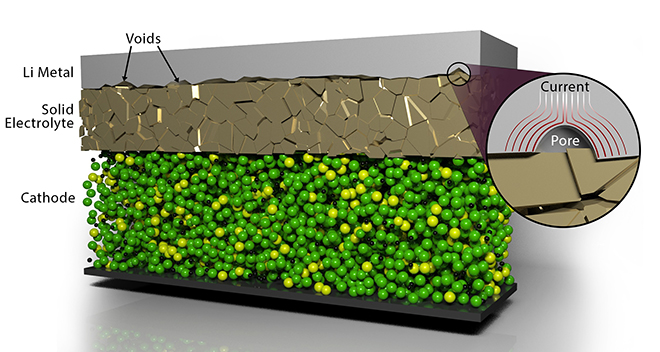Scientists at Oak Ridge National Laboratory have developed a scalable, low-cost method to improve the joining of materials in solid-state batteries. One of the challenges in manufacturing solid-state batteries is the difficulty of getting materials to properly join and remain stable during repeated cycles of charging and discharging. Scientists studying methods to overcome this contact impedance have focused on applying high pressures, but that process can lead to shorting, and would need to be re-applied periodically to extend the battery’s life, using an expensive aftermarket application.
The ORNL researchers used an electrochemical pulse to eliminate the voids that form when joining layers of lithium-metal anode material with a solid electrolyte material, in this case the ceramic garnet-type electrolyte LALZO. Applying short, high-voltage pulses led to increased contact at the interface of the materials, with no detrimental side effects.
The non-destructive, low-cost pulsing method results in a local heat-generating current that surrounds the lithium-metal-encased voids and causes them to dissipate. The team’s experiments and characterization of the materials indicated that the battery components did not degrade after applying the pulsing method. This approach could be scaled to allow the solid-state battery to be removed and refreshed, bringing it back to nearly its original capacity.
The idea for the method came from previous work in which ORNL battery researchers used electrochemical pulses to heal damaging dendrites that can form in solid electrolytes. This research is ongoing, and includes experiments with more advanced electrolyte materials. ORNL’s multidisciplinary energy storage team is also working to scale up its findings to a working-scale solid-state battery system.
“This method will enable an all-solid-state architecture without applying an extrinsic force that can damage the cell and is not practical to deploy during the battery’s usage,” said Ilias Belharouak, the project’s co-lead. “In the process we’ve developed, the battery can be manufactured as normal and then a pulse can be applied to rejuvenate and refresh the interface if the battery becomes fatigued.”
Source: ORNL
